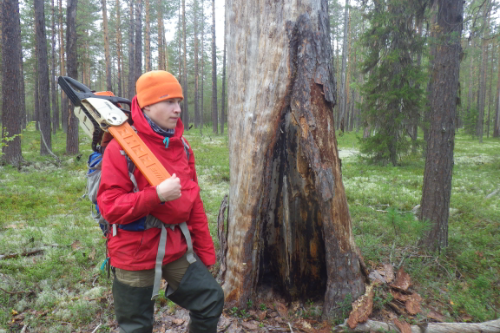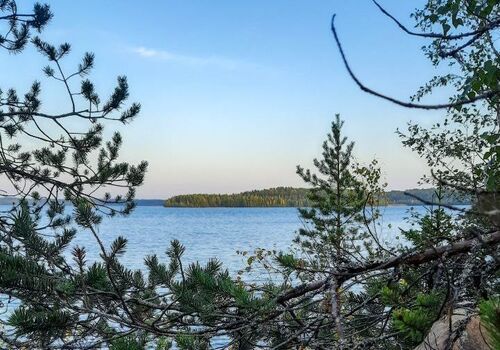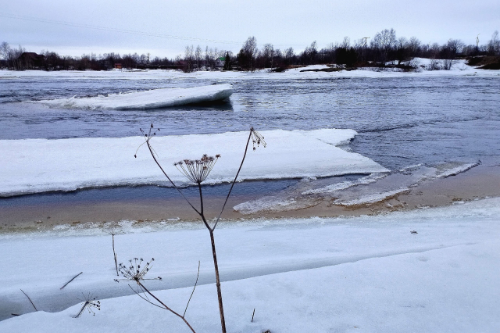The subject of Foma Vozmitel's research is the reconstruction of the history of forest fires using dendrochronological methods. This is done based on fire scars - traces left in the annual rings of trees after exposure to fire. The affected tree retains this imprint forever. Scientists take small cross-sections from living trees and the same kind of samples of dead wood: standing, downed, and stumps.
– First we polish the surface of the cut, then we scan it and measure the width of the annual rings. Special attention is paid to fire scars. The point of the dendrochronology method is precisely to cross-compare the annual rings of trees that grew in the same region and were influenced by the same factors. If the conditions for growth became poorer in a certain time period, the rings will be narrower. In a favorable year, on the contrary, they will be wider. By comparing these data from different trees, we can determine exactly in which year each ring was formed, especially if a dated scale is available. This way, even samples from long-dead trees can be dated step by step, — the researcher explains.
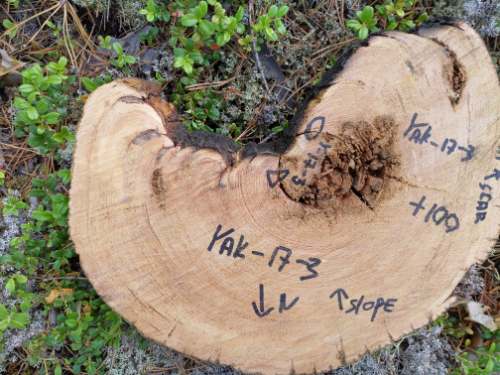
A sample from Yakutia with distinct fire scars
Not all trees are suitable for the study: in Russia's boreal forests, these are fire-resistant and thick-barked conifers, such as pine and larch. A laboratory at the Forest Research Institute stores a pine specimen which is about 500 years old and has survived 18 fires. Dead wood in relatively dry pine forests can be preserved for centuries.
Owing to such reconstructions, it is possible to determine the number of fires, the exact years and in most cases the season in which they occurred, to calculate their frequency and area affected, and to identify periods with different degrees of fire activity. This is important not only to understand historical processes, such as the influence of traditional forest management on fire occurrence, but also to analyze the current situation and predict future changes. Thus, fires play a key role in shaping the vegetation of boreal forests and are of great importance in the context of studying climate change.
– We not just document facts, but also analyze the dynamics of fire activity, aligning it with climatic data, primarily with reconstructions of temperature anomalies and dry periods. For example, at northern latitudes, an increase in fire activity was noted during the Little Ice Age, which lasted from about the 14th to the mid-19th centuries, with the greatest cooling in the 16th-18th centuries. Despite the low temperatures, this was a rather dry period, with a corresponding increase in the number of fires, – related Foma Vozmitel.
Dendrochronological reconstructions of fires sometimes reveal unexpected correlations. For example, scientists have previously found a negative correlation between fire activity in Scandinavia and water temperature in the North Atlantic, and a positive correlation with the extent of Arctic sea ice. These findings reflect the influence of global atmospheric and oceanic processes on the spread of fires.
– Plunging far back into the past, we cover the period when human activity in the studied areas was yet non-existent. This shows that the fire regime was not always fully dependent on human presence. Indeed, anthropogenic factors can raise fire frequency, but the extent of fire spread appears to depend more on climate. Interestingly, the 20th century saw a decline in fire activity in the boreal zone. Does this mean people have become more effective at fighting fire or is it a consequence of a wetter climatic phase? We may get closer to an answer through this study, – summed up Foma Vozmitel.
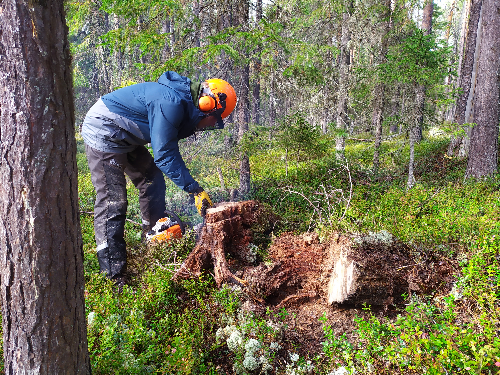
Sampling dead wood. Expedition to the North Urals
Geographically, the study covers Karelia, Leningrad Region, Komi Republic, Khanty-Mansi Autonomous Okrug, Sverdlovsk Region, Buryatia and Yakutia. With this set of territories, scientists can test how fire activity is influenced by the climate continentality gradient. In addition, this extensive territory makes it possible to assess the influence of large atmospheric fluctuations and delineate the boundaries of their impact. Another important consideration is that these regions have different development histories.
Foma Vozmitel first came across this topic in 2019, on an expedition to Vazhgort village area, Komi Republic, where he went together with his future colleagues from the Forest Research Institute of the Karelian Research Centre RAS. The current study is a continuation of the work started at uni: he was then doing reconstructions of fire activity in the Pechoro-Ilychsky and Denezhkin Kamen nature reserves in the Northern Urals. The scientist is now working with samples collected in Yakutia and Khanty-Mansi Autonomous Okrug.
We congratulate Foma on receiving the Presidential scholarship and wish him exciting expeditions and fruitful research!
Photos from F. Vozmitel’s personal archives




